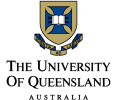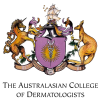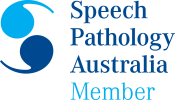There are two subcategories for therapy targeting Speech Sound Delays and Disorders. These include Articulation therapy and Phonology therapy. The two are often confused so below is some information about both and the differentiating features between the two therapy types.
What is Articulation Therapy?
Articulation therapy is a type of therapy method that targets speech errors that affect one sound in every position due to difficulty producing the sounds. For example someone with a lisp may have difficulty producing the ‘s’ sound and may instead make an ‘s’ sound that is slushy. The error is global, meaning that they produce the same error every time for that one sound. It is possible to have multiple articulation errors at the same time as well. For example an individual may have a lisp and also have difficulty producing the ‘th’ sound in all positions within a word and instead produce an ‘f’ sound (e.g. ‘thing’ becomes ‘fing’).
Therapy is very structured and begins at the level of sound production. Then those sounds are placed into words, phrases, sentences, stories and finally incorporated into conversation. Another differentiating feature of Articulation therapy is that the Speech pathologist makes specific references to the sound and its production and provides cues in terms of placement of the lips, tongue and palate to help produce the sound.
What is Phonology Therapy?
Phonology therapy on the other hand is used to target sound error patterns. For example, some children have difficulty producing sounds at the end of words and is not specific to one sound. For example, a child may substitute the word ‘sail’ with the word ‘say’ as they have trouble producing the ‘L’ sound at the end. In the same way they may substitute the word ‘beam’ with the word ‘bee’ as they are having trouble producing the ‘m’ sound at the end.
Therapy of this style is focused on meaning. The speech pathologist highlights the communication breakdown to help the child register that they have not in fact produced the word that they meant to say. The child must then try to correct their production of the word to ensure they are producing the intended word correctly.
If the child is unable to produce the sound themselves, the cues of the articulation therapy are often incorporated to help with physical production of the sound. The therapy style in this case would be a combined treatment approach.
Contact us for results focused on speech therapy
This article was written by our Speech Pathologist Ashleigh Fattah who is a Speech Pathology Australia member. If you have speech pathology related questions, make an appointment. We‘ll provide you with simple and effective therapy targeted to your concerns. Contact us today.
The post What is speech sound therapy? appeared first on ENT Wellbeing Sydney.










